Recent BBC Culture article, Christian Petzold: How Germans today confront the Nazis, takes a look at how the attitude of German filmmakers has changed in the past 15 years and how the cinema is turning the cameras on the nation’s darkest hour in films and TV. Read more on what Nina Hoss, an actress in the latest German film to address the war and its aftermath Christian Petzold’s Phoenix, has to say bbc.com/culture
———————————————————————————————————————————–
Browse some of Berghahn’s relevant titles on the topic of Nazi portrayal and postwar cinema in Germany & Europe.
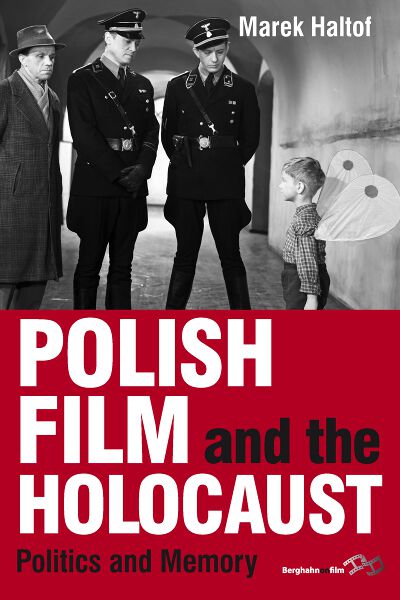 POLISH FILM AND THE HOLOCAUST
POLISH FILM AND THE HOLOCAUST
Politics and Memory
Marek Haltof
During World War II Poland lost more than six million people, including about three million Polish Jews who perished in the ghettos and extermination camps built by Nazi Germany in occupied Polish territories. This book is the first to address the representation of the Holocaust in Polish film and does so through a detailed treatment of several films, which the author frames in relation to the political, ideological, and cultural contexts of the times in which they were created. Following the chronological development of Polish Holocaust films, the book begins with two early classics: Wanda Jakubowska’s The Last Stage (1948) and Aleksander Ford’s Border Street (1949), and next explores the Polish School period, represented by Andrzej Wajda’s A Generation (1955) and Andrzej Munk’s The Passenger (1963). Between 1965 and 1980 there was an “organized silence” regarding sensitive Polish-Jewish relations resulting in only a few relevant films until the return of democracy in 1989 when an increasing number were made, among them Krzysztof Kieślowski’s Decalogue 8 (1988), Andrzej Wajda’s Korczak (1990), Jan Jakub Kolski’s Keep Away from the Window (2000), and Roman Polański’s The Pianist (2002). An important contribution to film studies, this book has wider relevance in addressing the issue of Poland’s national memory.
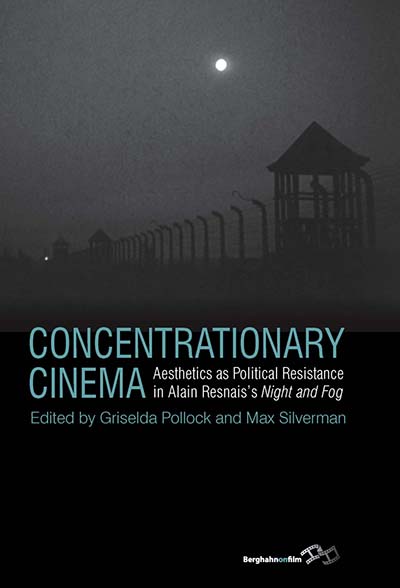 CONCENTRATIONARY CINEMA
CONCENTRATIONARY CINEMA
Aesthetics as Political Resistance in Alain Resnais’s Night and Fog
Edited By Griselda Pollock and Max Silverman
Since its completion in 1955, Alain Resnais’s Night and Fog (Nuit et Brouillard) has been considered one of the most important films to confront the catastrophe and atrocities of the Nazi era. But was it a film about the Holocaust that failed to recognize the racist genocide? Or was the film not about the Holocaust as we know it today but a political and aesthetic response to what David Rousset, the French political prisoner from Buchenwald, identified on his return in 1945 as the ‘concentrationary universe’ which, now actualized, might release its totalitarian plague any time and anywhere? What kind of memory does the film create to warn us of the continued presence of this concentrationary universe? This international collection re-examines Resnais’s benchmark film in terms of both its political and historical context of representation of the camps and of other instances of the concentrationary in contemporary cinema. Through a range of critical readings, Concentrationary Cinema explores the cinematic aesthetics of political resistance not to the Holocaust as such but to the political novelty of absolute power represented by the concentrationary system and its assault on the human condition.
Winner of the 2012 Kraszna-Krausz Foundation Book Award for Best Moving Image Book
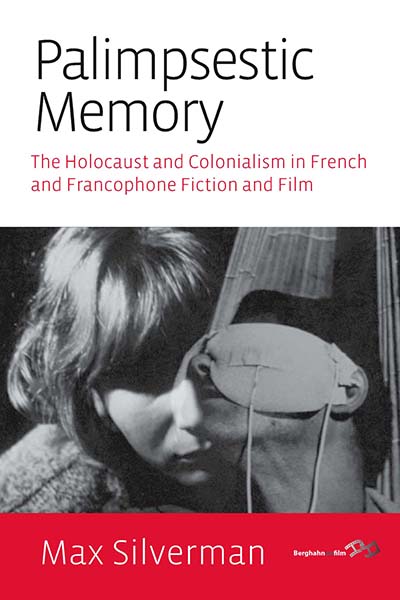 PALIMPSESTIC MEMORY
PALIMPSESTIC MEMORY
The Holocaust and Colonialism in French and Francophone Fiction and Film
Max Silverman
The interconnections between histories and memories of the Holocaust, colonialism and extreme violence in post-war French and Francophone fiction and film provide the central focus of this book. It proposes a new model of ‘palimpsestic memory’, which the author defines as the condensation of different spatio-temporal traces, to describe these interconnections and defines the poetics and the politics of this composite form. In doing so it is argued that a poetics dependent on tropes and techniques, such as metaphor, allegory and montage, establishes connections across space and time which oblige us to perceive cultural memory not in terms of its singular attachment to a particular event or bound to specific ethno-cultural or national communities but as a dynamic process of transfer between different moments of racialized violence and between different cultural communities. The structure of the book allows for both the theoretical elaboration of this paradigm for cultural memory and individual case-studies of novels and films.
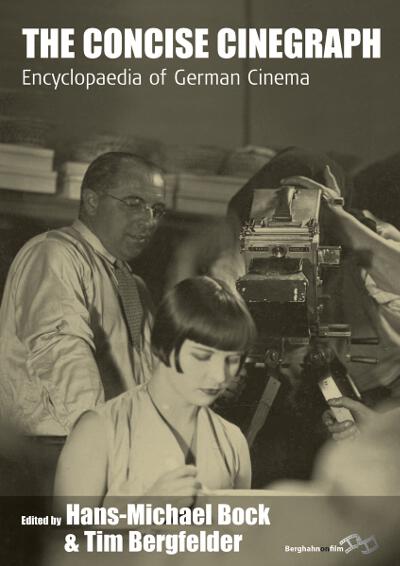 THE CONCISE CINEGRAPH
THE CONCISE CINEGRAPH
Encyclopaedia of German Cinema
General Editor: Hans-Michael Bock, CineGraph Hamburg
Associate Editor: Tim Bergfelder, University of Southampton
This comprehensive guide is an ideal reference work for film specialists and enthusiasts. First published in 1984 but continuously updated ever since, CineGraph is the most authoritative and comprehensive encyclopedia on German-speaking cinema in the German language. This condensed and substantially revised English-language edition makes this important resource available to students and researchers for the first time outside its German context. It offers a representative historical overview through bio-filmographical entries on the main protagonists, from the beginnings to the present day. Included are directors and actors, writers and cameramen, composers and production designers, film theorists and critics, producers and distributors, inventors and manufacturers. An appendix includes short introductory essays on specific periods and movements, such as Early Film, Weimar, Nazi Cinema, DEFA, New German Cinema, and German film since unification, as well as on cinematic developments in Austria and Switzerland. Sections that crossreference names around specific professional groups and themes will prove equally invaluable to researchers.
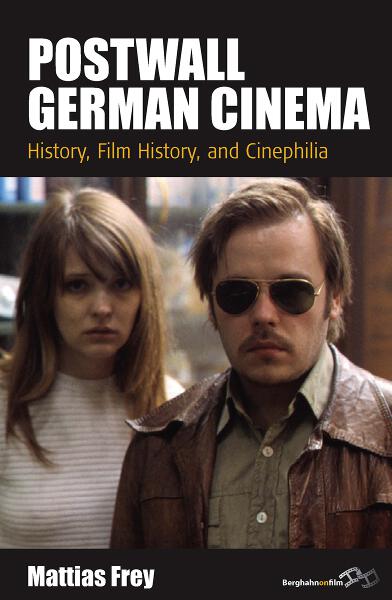 POSTWALL GERMAN CINEMA
POSTWALL GERMAN CINEMA
History, Film History and Cinephilia
Mattias Frey
Since the fall of the Berlin Wall, there has been a proliferation of German historical films. These productions have earned prestigious awards and scored at box offices both at home and abroad, where they count among the most popular German films of all time. Suddenly, however, a significant departure has been made from the country’s prominent cinematic take on history: the radical style, content, and politics of the New German Cinema. With in-depth analyses of the major trends and films, this book represents a comprehensive assessment of the historical film in postwall Germany. Challenging previous paradigms, it takes account of a postwall cinema of retro-flection as a complex engagement with various historiographical forms and, above all, with film history itself.
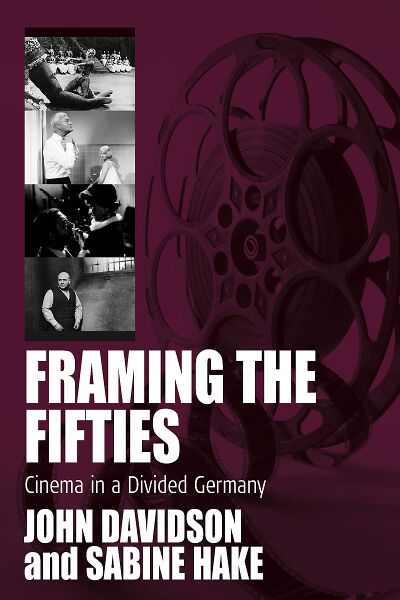 FRAMING THE FIFTIES
FRAMING THE FIFTIES
Cinema in a Divided Germany
Edited by John Davidson and Sabine Hake
The demise of the New German Cinema and the return of popular cinema since the 1990s have led to a renewed interest in the postwar years and the complicated relationship between East and West German cinema in particular. A survey of the 1950s, as offered here for the first time, is therefore long overdue. Moving beyond the contempt for “Papa’s Kino” and the nostalgia for the fifties found in much of the existing literature, this anthology explores new uncharted territories, traces hidden connections, discovers unknown treasures, and challenges conventional interpretations. Informed by cultural studies, gender studies, and the study of popular cinema, this anthology offers a more complete account by focusing on popular genres, famous stars, and dominant practices, by taking into account the complicated relationships between East vs. West German, German vs. European, and European vs. American cinemas; and by paying close attention to the economic and political conditions of film production and reception during this little-known period of German film history.
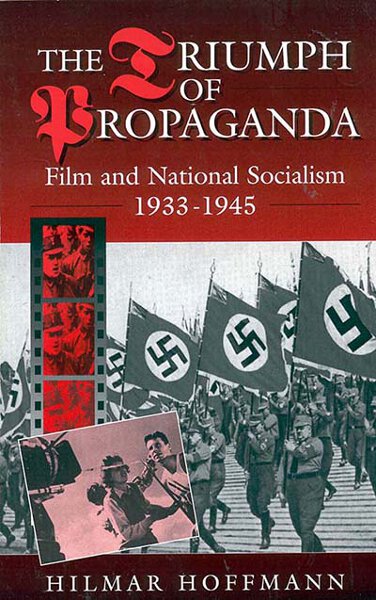 THE TRIUMPH OF PROPAGANDA
THE TRIUMPH OF PROPAGANDA
Film and National Socialism 1933-1945
Hilmar Hoffmann
Translated from the German by John Broadwin and Volker R. Berghahn.
The Nazis saw film as a major vehicle for both indoctrination and escapist pacification of the “masses”; in fact, Propaganda Minister Joseph Goebbels tried to create a German counter-Hollywood. This highly acclaimed study, by one of Germany’s leading commentators and authors on cultural policy, analyses the pictorial and spoken language of the various film genres in the Third Reich, including news reels, documentaries, feature and “cultural” films. It shows how a powerful and sinister propaganda machine emerged which, by deploying a wide range of psychological techniques, exerted a strong fascination on the masses. These methods were so successful that they continue to serve as models for totalitarian régimes to this day.
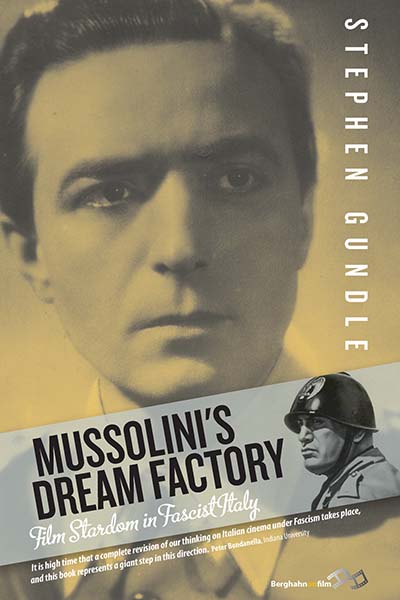 MUSSOLINI’S DREAM FACTORY
MUSSOLINI’S DREAM FACTORY
Film Stardom in Fascist Italy
Stephen Gundle
The intersection between film stardom and politics is an understudied phenomenon of Fascist Italy, despite the fact that the Mussolini regime deemed stardom important enough to warrant sustained attention and interference. Focused on the period from the start of sound cinema to the final end of Fascism in 1945, this book examines the development of an Italian star system and evaluates its place in film production and distribution. The performances and careers of several major stars, including Isa Miranda, Vittorio De Sica, Amedeo Nazzari, and Alida Valli, are closely analyzed in terms of their relationships to the political sphere and broader commercial culture, with consideration of their fates in the aftermath of Fascism. A final chapter explores the place of the stars in popular memory and representations of the Fascist film world in postwar cinema.
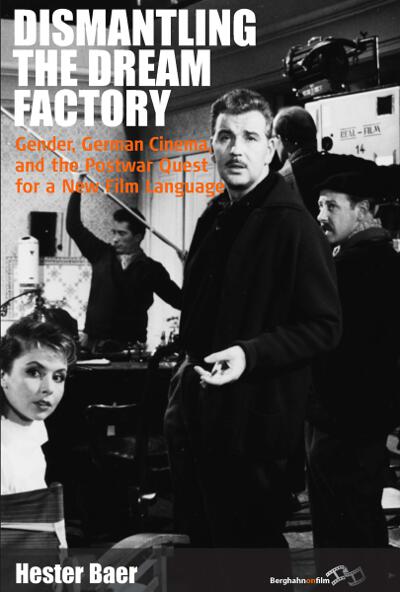 DISMANTLING THE DREAM FACTORY
DISMANTLING THE DREAM FACTORY
Gender, German Cinema, and the Postwar Quest for a New Film Language
Hester Baer
The history of postwar German cinema has most often been told as a story of failure, a failure paradoxically epitomized by the remarkable popularity of film throughout the late 1940s and 1950s. Through the analysis of 10 representative films, Hester Baer reassesses this period, looking in particular at how the attempt to ‘dismantle the dream factory’ of Nazi entertainment cinema resulted in a new cinematic language which developed as a result of the changing audience demographic. In an era when female viewers comprised 70 per cent of cinema audiences a ‘women’s cinema’ emerged, which sought to appeal to female spectators through its genres, star choices, stories and formal conventions. In addition to analyzing the formal language and narrative content of these films, Baer uses a wide array of other sources to reconstruct the original context of their reception, including promotional and publicity materials, film programs, censorship documents, reviews and spreads in fan magazines. This book presents a new take on an essential period, which saw the rebirth of German cinema after its thorough delegitimization under the Nazi regime.
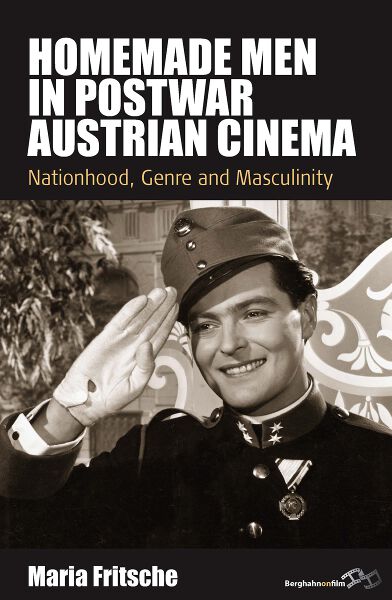 HOMEMADE MEN IN POSTWAR AUSTRIAN CINEMA
HOMEMADE MEN IN POSTWAR AUSTRIAN CINEMA
Nationhood, Genre and Masculinity
Maria Fritsche
Despite the massive influx of Hollywood movies and films from other European countries after World War II, Austrian film continued to be hugely popular with Austrian and German audiences. By examining the decisive role that popular cinema played in the turbulent post-war era, this book provides unique insights into the reconstruction of a disrupted society. Through detailed analysis of the stylistic patterns, narratives and major themes of four popular genres of the time, costume film, Heimatfilm, tourist film and comedy, the book explains how popular cinema helped to shape national identity, smoothed conflicted gender relations and relieved the Austrians from the burden of the Nazi past through celebrating the harmonious, charming, musical Austrian man.
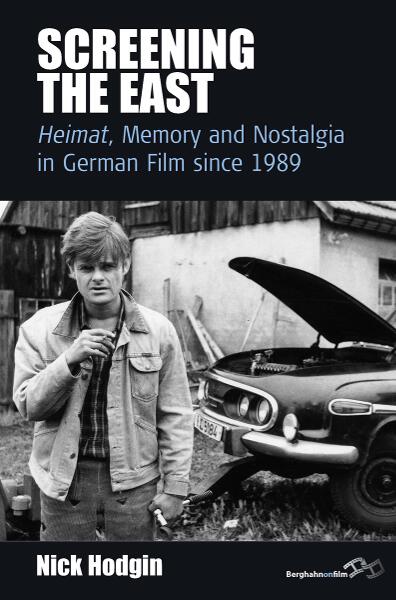 SCREENING THE EAST
SCREENING THE EAST
Heimat, Memory and Nostalgia in German Film since 1989
Nick Hodgin
Screening the East considers German filmmakers’ responses to unification. In particular, it traces the representation of the East German community in films made since 1989 and considers whether these narratives challenge or reinforce the notion of a separate East German identity. The book identifies and analyses a large number of films, from internationally successful box-office hits, to lesser-known productions, many of which are discussed here for the first time. Providing an insight into the films’ historical and political context, it considers related issues such as stereotyping, racism, regional particularism and the Germans’ confrontation with the past.
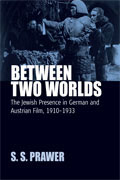 BETWEEN TWO WORLDS
BETWEEN TWO WORLDS
The Jewish Presence in German and Austrian Film, 1910-1933
S. S. Prawer
Jews have been well represented in the cinema industry from the beginning of the film era: behind the screen, as producers, distributors, directors, script-writers, composers, set designers; and on the screen, as Jewish actors and as named Jewish characters in the film’s plot. Some of these characters are fictional; others, ranging from Rabbi Loew of Prague to Ferdinand Lassalle and Alfred Dreyfus, have a historic original. This book examines how a variety of German and Austrian films treat aspects of Jewish life, at home and in the synagogue, and Jewish interaction with fellow Jews in different cultural environments; conflicts and accommodations between Jews and non-Jews at various times, ranging from the medieval to the contemporary. The author, one of the best known scholars in film history, theory and criticism, offers the reader a rich panorama of the many Jews involved in all spheres of the cinema and who, as the author reminds us repeatedly, together with their non-Jewish contemporaries, created a great industry and new forms of art.
Visit our web to browse a full list of titles on Film & Media Studies
———————————————————————————————————————————–
From Berghahn Journals:
 Projections
Projections
The Journal for Movies and Mind
Published in association with The Society for Cognitive Studies of the Moving Image and The Forum for Movies and Mind
Projections: The Journal for Movies and Mind is an interdisciplinary, peer-reviewed journal that explores the way in which the mind experiences, understands, and interprets the audio-visual and narrative structures of cinema and other visual media. Recognizing cinema as an art form, the journal aims to integrate established traditions of analyzing media aesthetics with current research into perception, cognition and emotion, according to frameworks supplied by psychology, psychoanalysis, and the cognitive and neurosciences. Submissions are welcomed from a variety of scholarly methods within the humanities and the sciences, from aesthetic to empirical, theoretical, and historical approaches. The journal seeks to facilitate a dialogue between scholars in these disciplines and bring the study of moving image media to the forefront of contemporary intellectual debate.
